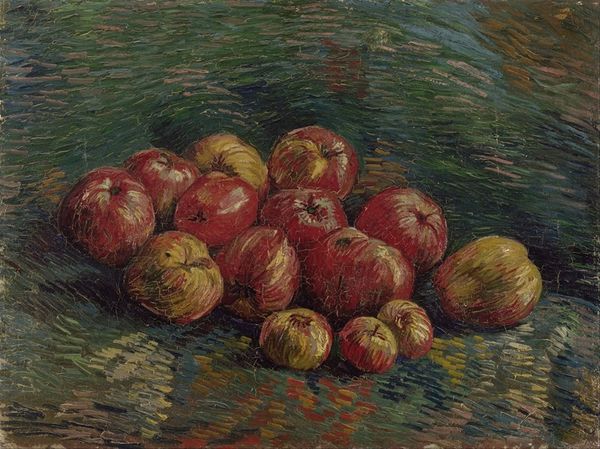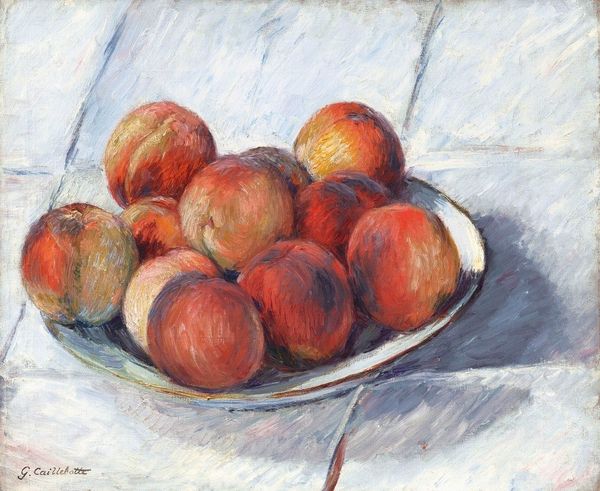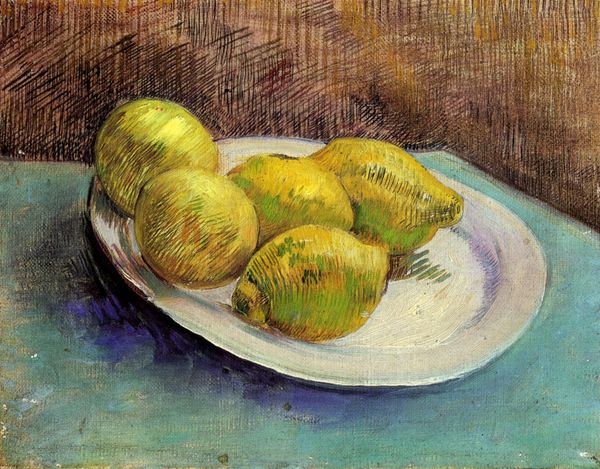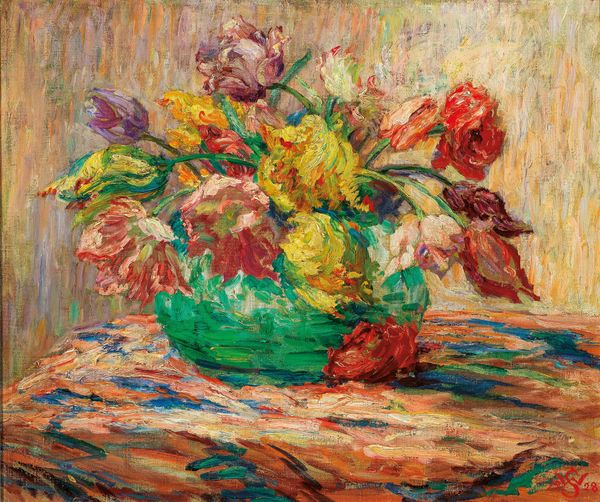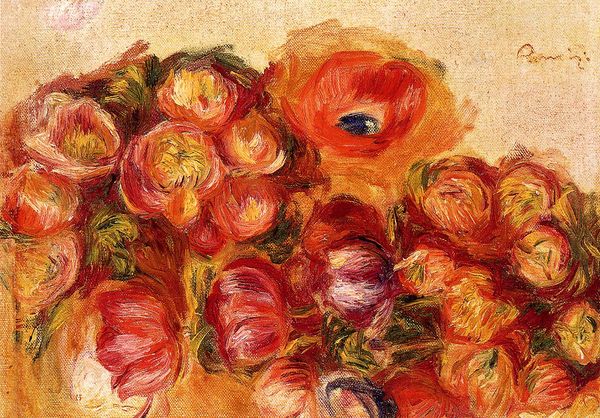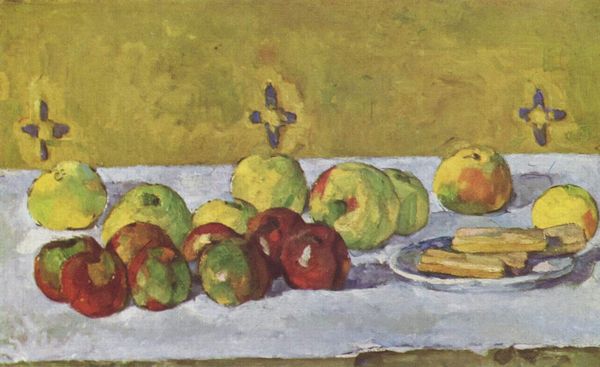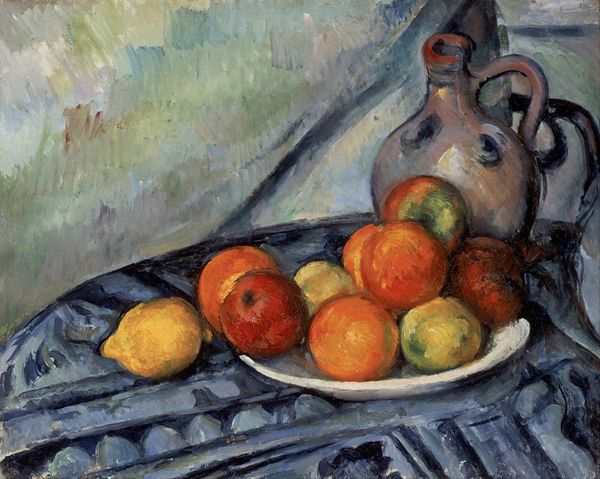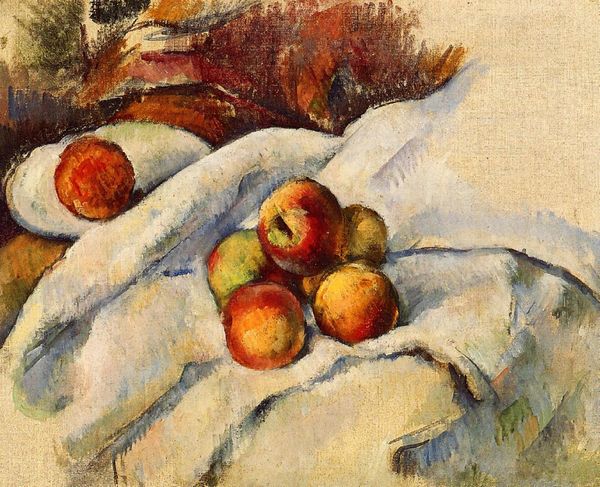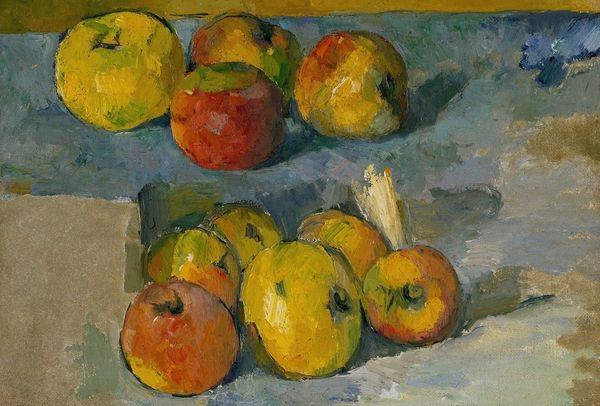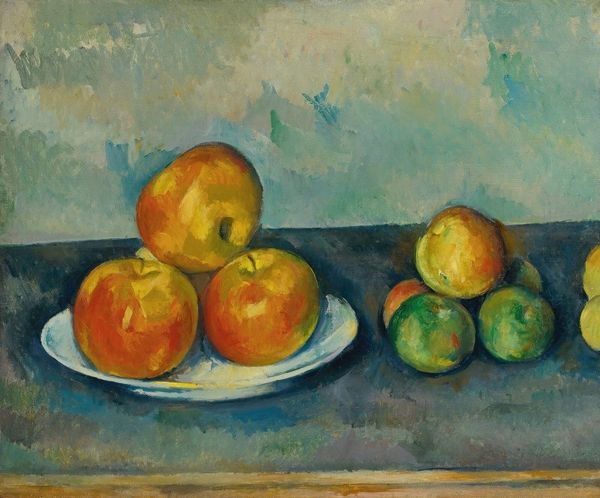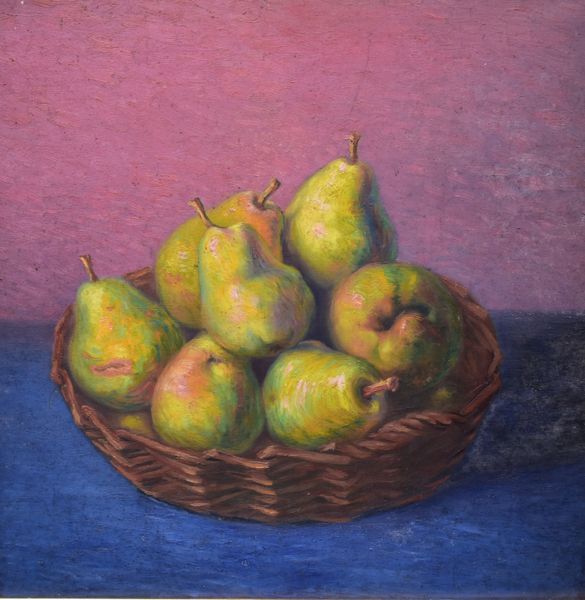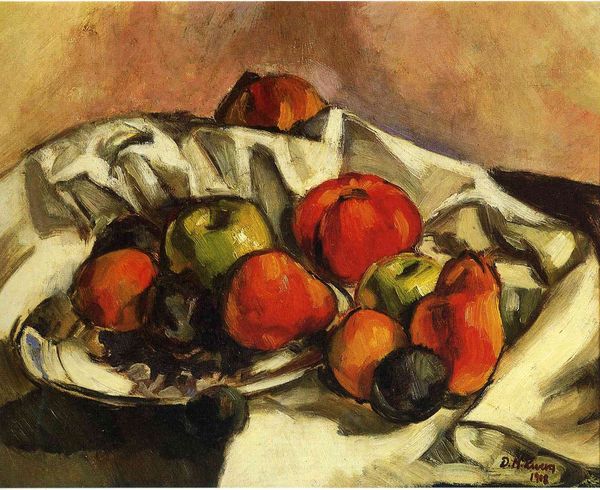
painting, oil-paint, photography
#
still-life
#
painting
#
impressionism
#
oil-paint
#
photography
#
oil painting
#
fruit
#
post-impressionism
Copyright: Public domain
Claude Monet created "Branch of Lemons" with oil on canvas, a still life that encapsulates the shifting perceptions of the art world in France. Painted during the late 19th century, this work moves away from traditional academic painting and signals the rise of Impressionism. The loose brushstrokes and focus on light reveal Monet's interest in capturing the fleeting moment. But, beyond its aesthetic qualities, consider the social context: Impressionism was initially rejected by the established art institutions, like the Salon, which favored more polished, narrative-driven works. Artists like Monet formed independent exhibitions to challenge these norms, democratizing the art world and creating space for new forms of expression. To understand this painting fully, we can investigate exhibition records, critical reviews, and artists’ letters, which illuminate this pivotal moment in art history. The meaning of art always depends on the social and institutional context that surrounds it.
Comments
No comments
Be the first to comment and join the conversation on the ultimate creative platform.
